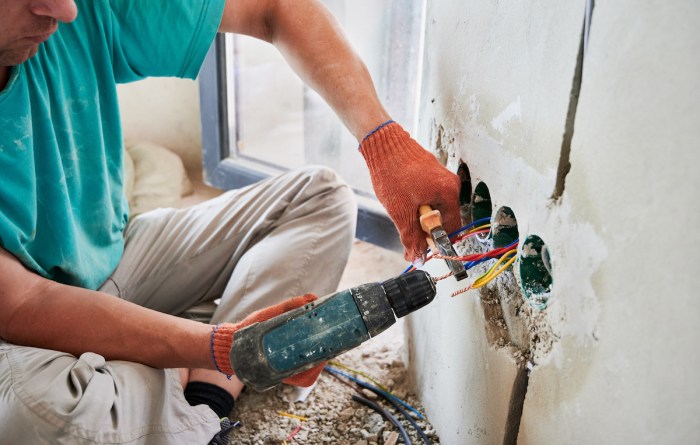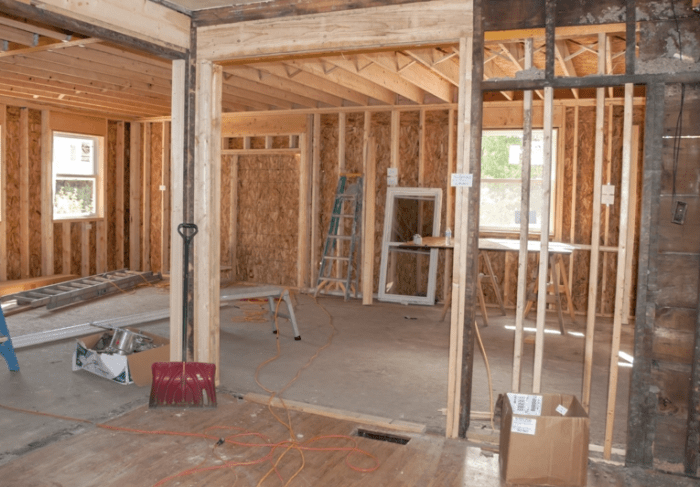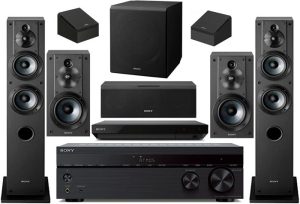
Understanding Cost-Effective Wiring Materials

Choosing the right wiring materials significantly impacts both the initial cost and long-term performance of your home renovation electrical work. Understanding the differences in cost, lifespan, and safety features of various wiring options is crucial for making informed, budget-friendly decisions. This section will explore these factors to help you select the most appropriate materials for your project.
Copper vs. Aluminum Wiring: A Cost and Lifespan Comparison
Copper and aluminum are the most common materials for electrical wiring in homes. While aluminum wiring was once popular due to its lower cost, it presents several drawbacks compared to copper. The following table summarizes the key differences:
| Material | Approximate Material Cost (per foot – estimates vary widely based on gauge and market conditions) | Longevity (Years) | Safety Features |
|---|---|---|---|
| Copper | $0.50 – $2.00 | 50+ | Excellent conductivity, high resistance to corrosion, less prone to overheating. |
| Aluminum | $0.25 – $1.00 | 20-30 (with proper installation and maintenance) | Lower conductivity, more susceptible to corrosion, higher risk of overheating and fire hazards if not properly installed and maintained. Requires specialized connectors. |
*Note: These cost estimates are approximations and can vary significantly based on current market prices, gauge, and location. Longevity is also affected by environmental factors and installation quality.*
Wiring Gauge and Insulation: Price and Application
The gauge of the wire refers to its diameter, with smaller gauge numbers indicating thicker wires. Thicker wires can carry more current and are less prone to overheating. The type of insulation also impacts cost and performance.Different gauge sizes are suited for different applications. For example:* 14 AWG: Commonly used for 15-amp circuits in residential lighting and receptacle circuits.
12 AWG
Used for 20-amp circuits, often found powering kitchen appliances and other high-draw devices.
10 AWG
Suitable for larger appliances and high-current applications.
8 AWG
Used for heavy-duty appliances, like electric ranges and clothes dryers.Insulation types include PVC (polyvinyl chloride), which is common and cost-effective, and more specialized insulations for higher-temperature or other demanding applications. Generally, thicker gauges and specialized insulation types will increase the cost per foot of wiring.
Long-Term Cost Savings of Higher-Quality Wiring
While higher-quality wiring materials, like thicker gauge copper with high-quality insulation, may have a higher upfront cost, they offer significant long-term savings. These savings come from:* Reduced risk of electrical fires: Properly sized and insulated wiring significantly reduces the risk of overheating and fire hazards, potentially saving you from costly repairs or insurance claims. For example, a house fire caused by faulty wiring can result in hundreds of thousands of dollars in damages.
Improved energy efficiency
Thicker gauge wires have lower resistance, resulting in less energy loss during transmission. This can lead to lower electricity bills over the lifespan of the wiring. Even small reductions in energy loss can add up to significant savings over time.
Increased lifespan and reduced replacement costs
Higher-quality wiring lasts significantly longer, reducing the need for costly replacements in the future. Replacing entire sections of wiring is a labor-intensive process that can add significant costs to a renovation.By investing in higher-quality wiring initially, you can avoid the much higher expenses associated with fire damage, energy inefficiency, and premature wiring failure. The long-term cost savings often outweigh the initial higher purchase price.
Efficient Wiring Techniques for Renovation Projects
Careful planning and execution of wiring during a home renovation significantly impact both the final cost and the project’s overall success. Minimizing waste, optimizing layouts, and choosing the right materials are key to achieving cost-effective results. This section focuses on practical techniques to enhance efficiency and reduce expenses in your electrical wiring projects.Minimizing Wire Waste and Accurate MeasurementAccurate measurement and cutting of wires are crucial for minimizing waste.
Improper measurements lead to excess wire, increasing material costs and potentially creating clutter within the walls. Using a measuring tape and marking the wire precisely before cutting is essential. Consider using a wire stripper and cutter that allows for clean, precise cuts, avoiding frayed ends that might compromise the connection. For longer runs, pre-fabricating wire lengths in batches, based on accurate measurements taken from the wiring layout, can further reduce waste.
Always add a small buffer to your measurements to account for any unexpected bends or adjustments during installation. Remember to always double-check your measurements before cutting, as it’s significantly more expensive to replace wasted wire than to measure carefully.
Kitchen Renovation Wiring Layout
A well-planned wiring layout for a kitchen renovation minimizes material usage and streamlines the installation process. The following steps Artikel a typical approach:
- Assess Existing Wiring: Begin by carefully examining the existing electrical system. Identify the location of existing outlets, switches, and circuit breakers. This assessment will inform decisions about reusing existing wiring or adding new circuits.
- Plan Appliance Locations: Determine the precise locations of all appliances that require electrical connections (oven, dishwasher, refrigerator, microwave, etc.). This dictates the placement of outlets and the routing of wiring.
- Design Circuit Layout: Design a circuit layout that distributes the load evenly across multiple circuits. Consider the power requirements of each appliance and adhere to relevant electrical codes. Avoid overloading any single circuit.
- Route Wiring: Plan the most efficient routes for wiring, minimizing the total length required. Consider running wires within existing wall cavities or using surface-mount raceways where necessary.
- Detailed Measurements: Take detailed measurements for each wire run, accounting for bends, junctions, and connections. Record these measurements meticulously to avoid errors during the installation phase.
- Purchase Materials: Purchase only the necessary amount of wire and other materials based on the accurate measurements and circuit design.
Pre-wired Assemblies versus Individual Wiring
The choice between pre-wired assemblies (such as pre-assembled junction boxes with wires already attached) and individual wiring involves weighing several factors.
| Pre-wired Assemblies | Individual Wiring |
|---|---|
| Advantages: Faster installation, reduced labor costs, potentially cleaner and neater installations, fewer connection points potentially reducing failure points. | Advantages: Greater flexibility in design and routing, allows for precise customization, potentially lower material costs for simpler projects. |
| Disadvantages: Higher initial material cost, less flexibility in design, may not always be suitable for all applications, potential limitations in wire gauge or length. | Disadvantages: More time-consuming installation, requires more skill and precision, increased risk of errors and potential for higher labor costs. |
Labor Costs and Strategies for Reducing Them
Labor costs represent a significant portion of the overall expense in any home renovation project, especially electrical work. Minimizing these costs without compromising safety and quality is crucial for achieving cost-effective solutions. Strategic planning, efficient techniques, and careful consideration of DIY versus professional help can significantly impact the final bill.Effective strategies to reduce labor costs focus on optimizing the workflow and minimizing the time spent on the job.
This includes careful pre-planning, employing efficient techniques, and selecting appropriate tools.
Simplifying the Wiring Process
Streamlining the wiring process can drastically reduce labor hours. This involves meticulous planning before starting any work. For instance, pre-fabricating wire harnesses in a workshop before installation significantly reduces on-site time. This allows electricians to install pre-assembled sections, instead of spending time individually stripping, connecting, and securing each wire. Another time-saving technique is using pre-wired junction boxes, especially in repetitive situations like installing multiple light fixtures or outlets in a single room.
Tools like wire strippers with automatic length adjustment and cable pullers greatly enhance efficiency. Employing a laser measuring tool to accurately plan cable runs also prevents rework and saves time.
Professional Electricians vs. DIY Wiring: A Cost Comparison
The decision to hire a professional electrician or undertake DIY wiring is a critical factor influencing labor costs. While DIY can seem cheaper initially, it often involves hidden costs, including time spent learning, potential mistakes leading to costly repairs, and the risk of injury.
| Approach | Labor Cost (Estimate) | Material Cost (Estimate) | Total Estimated Cost | Considerations |
|---|---|---|---|---|
| Hiring a Professional Electrician (for a medium-sized renovation) | $2000 – $5000 | $500 – $1500 | $2500 – $6500 | Includes permits, insurance, and expertise; ensures safety and code compliance. |
| DIY Wiring (for a medium-sized renovation) | $0 (labor) | $500 – $1500 | $500 – $1500 | Requires significant time investment, potential for errors and rework, and lacks safety net of professional insurance and expertise. |
*Note: These are estimates and can vary widely based on location, project complexity, and electrician rates.* For example, a simple kitchen outlet replacement might cost significantly less than rewiring an entire house. A larger, more complex project could significantly increase the costs in both scenarios.
Minimizing On-Site Delays
Thorough planning and organization are essential for minimizing on-site delays and their associated labor costs. This starts with detailed blueprints and accurate material lists. Securing necessary permits well in advance prevents project halts. Maintaining clear communication between the electrician, homeowner, and other contractors minimizes conflicts and misunderstandings. Ensuring all materials are readily available on-site also prevents delays caused by supply shortages.
A well-organized workspace allows for efficient movement and reduces wasted time searching for tools or materials. For example, a pre-planned layout of cable runs can significantly reduce time spent on-site, leading to lower labor costs. Similarly, a clear communication plan can help avoid unexpected delays due to changes or unforeseen issues.
Exploring Alternative Wiring Solutions
Home renovation often presents opportunities to explore cost-effective and efficient wiring solutions beyond traditional methods. This section examines alternative approaches, comparing their costs, benefits, energy efficiency, and regulatory compliance. Understanding these factors is crucial for making informed decisions that balance budget constraints with long-term energy savings and safety.Surface mount wiring and wireless solutions represent viable alternatives to traditional in-wall wiring, each with distinct advantages and disadvantages.
These alternatives can significantly impact the overall project cost and energy efficiency, demanding careful consideration of their suitability for specific renovation needs.
Surface Mount Wiring Costs and Benefits
Surface mount wiring, also known as exposed wiring, involves running cables along the walls or ceilings, often concealed within surface-mounted raceways or conduit. This method is significantly cheaper than embedding wires within walls, especially in renovations where opening walls is impractical or costly. However, it can be less aesthetically pleasing and may require more careful planning to maintain a clean and organized appearance.
The initial material costs are lower, but the labor costs might be comparable depending on the complexity of the routing. For instance, a small kitchen remodel using surface mount wiring for additional outlets might cost 20-40% less in materials than traditional in-wall wiring, while a larger project with extensive runs might see smaller savings. The visible nature of the wiring might reduce the resale value of the property compared to a more integrated system.
Wireless Wiring Solutions: Costs, Benefits, and Energy Efficiency
Wireless solutions, such as smart home systems utilizing powerline adapters or mesh networks, offer a compelling alternative for adding electrical circuits without the need for extensive rewiring. These systems transmit data and power wirelessly, eliminating the need to run new cables. While the initial investment in wireless equipment might be higher than traditional wiring, the labor savings can be substantial, especially in older homes or renovations where access to walls is difficult.
Energy efficiency can vary significantly depending on the technology used. Powerline adapters, for example, can experience energy loss through the existing wiring, while mesh networks may consume more power overall. However, the convenience and flexibility of wireless systems can outweigh these drawbacks, particularly for adding lighting or smart devices in areas where traditional wiring is challenging or impractical.
A recent case study showed that a home retrofitting using a mesh network system saved approximately 15% on labor costs compared to traditional wiring.
Regulatory Compliance and Costs
Different wiring solutions are subject to varying regulatory requirements, impacting the overall project cost. Surface mount wiring often requires specific safety measures, such as the use of approved raceways and conduit, to protect the exposed cables. These requirements can add to the overall material cost. Wireless solutions may also need to comply with specific regulations concerning electromagnetic interference and data security.
Failure to meet these requirements can lead to delays, fines, and potential safety hazards. Therefore, it is crucial to consult with a qualified electrician to ensure compliance with all applicable building codes and regulations throughout the renovation process. Non-compliance can easily add 10-20% to the overall project cost in fines and remediation work.
Energy Efficiency Comparison and Saving Practices
The energy efficiency of different wiring setups is influenced by factors such as wire gauge, the type of insulation, and the presence of energy-efficient lighting and appliances. Larger gauge wires offer lower resistance, resulting in reduced energy loss during transmission. Energy-efficient lighting (LEDs) and appliances significantly reduce energy consumption, regardless of the wiring method. The use of smart home technology can further enhance energy efficiency through automated control of lighting and appliances.
A home using LED lighting and smart thermostats, regardless of its wiring type, could see a reduction in energy consumption of up to 40% compared to a home with older incandescent lighting and less efficient appliances. Proper grounding and bonding also contribute to energy efficiency by minimizing voltage drops and ensuring the safety of electrical systems.
Visual Aids

Visual aids are crucial for understanding and implementing cost-effective electrical wiring solutions. Clear diagrams and illustrations can significantly improve comprehension, reducing errors and ultimately saving money during a home renovation project. They provide a concise and easily digestible method for conveying complex technical information.
Proper Junction Box Installation
This illustration depicts a properly installed junction box, emphasizing efficient wiring techniques. The box itself is securely mounted to the wall stud, using appropriate screws and ensuring a flush fit. Inside the box, we see three Romex cables entering. Each cable is stripped to the correct length, exposing only the necessary amount of wire to avoid unnecessary bulk within the box.
The wires are neatly organized, with the ground wires connected together using a green grounding screw, and the hot and neutral wires carefully twisted and connected using appropriate wire nuts, ensuring a secure and code-compliant connection. The number of wires within the box is minimized by strategically planning the wiring routes beforehand. This efficient use of space reduces the need for larger, more expensive junction boxes.
The overall image clearly shows the importance of neatness and proper cable management in reducing material usage and labor costs.
Comparison of Standard and Cost-Effective Wiring
This visual comparison highlights the differences between standard wiring practices and a more economical approach. On one side, we see a representation of standard wiring using multiple individual wires running long distances, often with excessive slack. Each wire is clearly labeled as hot, neutral, or ground. Several junction boxes are shown, suggesting a more complex and potentially wasteful wiring system.
The total cost of the materials is represented numerically, reflecting the higher expense. On the other side, we see a simplified wiring system utilizing fewer wires and strategically placed junction boxes. This approach employs techniques such as running multiple circuits within the same conduit where code allows, reducing the overall number of conduits and wires required. The image clearly labels these differences, and the total material cost is significantly lower, illustrating the potential savings.
The difference in the number of wire nuts and connectors also contributes to cost savings.
Proper Use of Wire Connectors
This image focuses on the correct use of wire connectors, emphasizing safety and efficiency. It shows a close-up view of several wires being joined together using wire connectors of the appropriate size. Each wire is stripped to the correct length, and the strands are neatly twisted before insertion into the connector. The connector is then firmly twisted until it is securely fastened.
The image emphasizes the importance of using connectors that are properly rated for the wire gauge and the number of wires being joined. It also highlights the importance of ensuring that all wires are fully inserted into the connector and that there are no loose strands. A clear visual warning against using undersized or damaged connectors is presented.
The image visually demonstrates the difference between a properly connected wire and one that is incorrectly or loosely connected. This visual representation underscores the importance of proper installation for safety and longevity.





